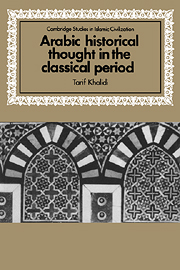1 - The birth of a tradition
Published online by Cambridge University Press: 23 November 2009
Summary
For historians, literary traditions are the most complex of subjects. They do not possess the familiar contours of events. They do not lend themselves easily to classification as to their beginning, middle or end. When speaking of them, historians often use metaphors of transparency like ‘atmospheres’ or ‘climates’. How they come into existence and how they relate to their environment are notoriously difficult problems. The normal tools of the historical trade, all the way from a dictionary to a pair of strong boots, do not seem to work so well when traditions are investigated. Traditions are untidy and the elements that enter into their make-up themselves belong to the debris of earlier traditions. Unlike an event, a tradition is not ‘born’ but emanates by slow stages from a cultural background. In the case of historical writing, the most relevant part of an environment is frequently an axial text, e.g. Homer for Greek, the Bible for Christian and the Qur'an for Islamic historiography. But these axial texts which inspire and control traditions are in their turn products of a particular consciousness, a particular way of viewing and representing the past.
The tradition of Islamic historical writing emerged from the environment of jahili (‘lawless’ or ‘savage’) Arabia. This epithet was given to the pre-Islamic period by the Qur'an. It is in itself an important historical judgement on Arabia's past and will be considered in its proper place. However, some two to three centuries before the coming of Islam (c. third to sixth centuries AD) jahili Arabia had achieved linguistic unity, an impressive and lasting legacy.
- Type
- Chapter
- Information
- Arabic Historical Thought in the Classical Period , pp. 1 - 16Publisher: Cambridge University PressPrint publication year: 1994

